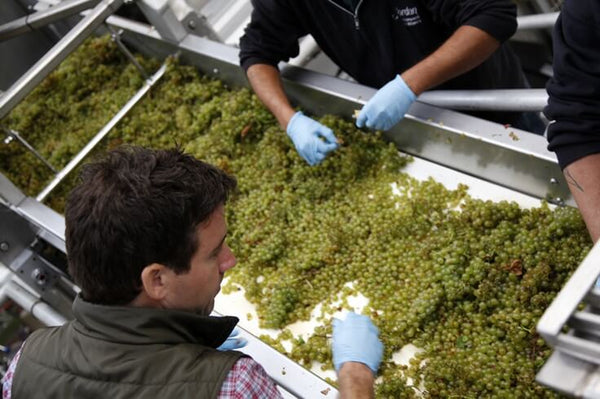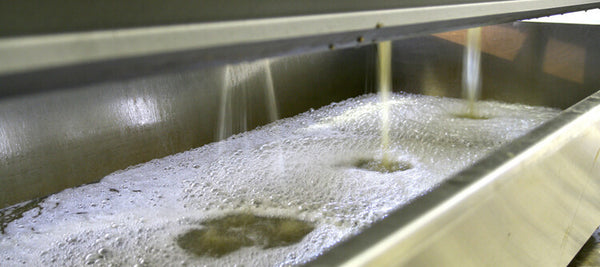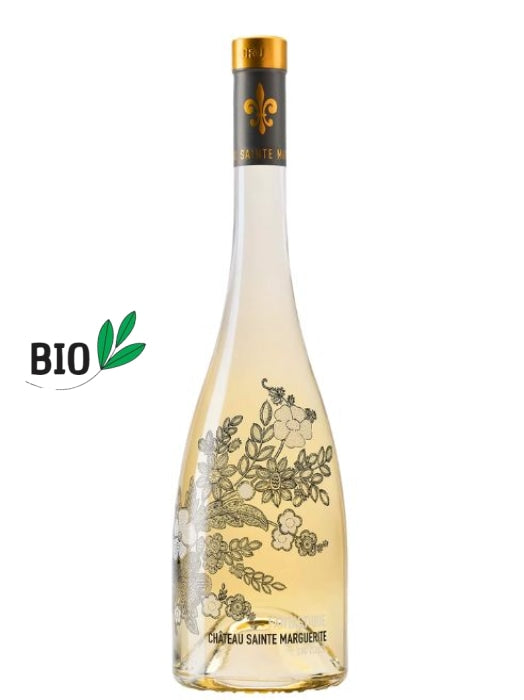Today synonymous with freshness and purity, white wine was born several millennia ago. However, its great diversity can sometimes be complex to grasp for the novice.
To provide you with the best possible insight on the subject, you will therefore find in this article all the keys to better understand the world of white wine. From its origins to its production methods and main styles, it will hold no more secrets for you after reading this!
The origins of white wine
According to the archaeological evidence available to us, the first wines produced by humans were made over 8,000 years ago in the Caucasus (Georgia, Armenia, Azerbaijan, etc.). If the excavations have still not made it possible to reveal what type of wine it was, it would be logical to think that it was white, given its greater ease of production compared to red wine.
Indeed, whether the grapes have red or white skins, these generally contain white juice. Therefore, if their berries are directly pressed (without maceration), this will allow the production of a white wine, regardless of the skin color of the grape!
While we are not certain of the color of the first wines produced by humans, the presence of white wine is nevertheless well established as early as Ancient Egypt, that is, already more than 3000 years before our era. Its consumption is also attested in Ancient Greece (1500 BC to 323 BC.JC) as well as among the Romans (27 BC until 476).
In France, following the collapse of the Roman Empire, it was the monks who took over the abandoned vineyards. The religious then produced wine for the needs of their abbeys. At the time, the wine used for mass could be either red or white, but from the 13th century onwards, only white wine was used in order to preserve the purity of the altar cloth as well as the liturgical linens.
With the progressive Christianization of the country, the needs increased. From the 9th century onwards, the lords also invested in the vineyard in order to have their own production as well as to demonstrate their belonging to a certain social elite.
As the Middle Ages progressed, wine consumption became more widespread. It was then consumed in large quantities by common people (up to 3L per day on average, including women and children!). Throughout this medieval period, the wine consumed was mainly white, as red wine did not yet truly exist (see our article on red wine). In fact, it was only from the 13th century onwards that the latter began to gain popularity and eventually surpassed white wine in volume in the 17th century.
Since that time, and still today, red wine has remained the majority. Indeed, in France, the average wine production is about 46% red wines, 34% rosé wines, and 20% white wines. Nevertheless, it should be noted that in recent years, red wine has lost some of its appeal, as consumers are seeking more lightness and freshness.
Should we expect a strong comeback of white wine?
How is white wine made?
Now that the history of white wine is clearer for you, let's now tackle its production ! To better understand how it is made, let's discover together the key steps of its production.
The harvest
The harvest is the first step in making any wine. It simply consists of picking the grapes when they reach maturity. This operation can be done manually or mechanically.
For premium quality wines, the grapes are sorted on a table to remove berries that are not ripe enough or are rotten.

Destemming (or stemming)
After being harvested, the berries are then destemmed.
This step consists of separating the grapes from their stem, a woody and vegetal structure forming the skeleton of the bunch.
While this operation is optional, it is very commonly practiced because the stem contains many less refined vegetal tannins.
Crushing
The grape berries are then burst in order to extract the juice: this is the crushing process.
This step is also optional. In fact, some winemakers choose to press the grapes directly without crushing them in order to collect the juice, which notably helps to limit the risk of oxidation as well as to produce purer and more delicate wines.
Maceration
Unlike red wine, maceration is also an optional step for white wine. In fact, in most cases, this step is not carried out for white wine in order to preserve the pale color of the juice. Moreover, when this is done, it then lasts no more than a few hours. Indeed, a short maceration can be beneficial for certain aromatic grape varieties such as Sauvignon or Muscat, allowing the future wine to gain aromatic intensity as well as to develop a certain body. Once again, this is a choice specific to the winemaker, depending on the type of wine they wish to produce.
Pressing
Pressing is the stage consisting of mechanically pressing the grapes in order to extract all the juice. For white wine, this phase often takes place directly after destemming, while the steps of crushing and maceration were more rarely practiced.
This is a decisive moment as well as a delicate operation for the winemaker. Indeed, the pressing must be skillfully measured. If not, certain solid parts (skins, seeds, stems) could bring less noble aromas to the future wine.

Alcoholic fermentation
Once the pressing is completed, it is time for the alcoholic fermentation.Under the action of yeasts (microscopic fungi) naturally present or added by the winemaker, the sugars are then transformed into alcohol: this is the moment when grape juice becomes wine!
For white wine, this stage takes place within a temperature range between 12 and 22°C and generally lasts between 4 and 15 days. While alcoholic fermentation is usually carried out in stainless steel tanks, it can also take place in oak barrels or in other containers (barrels, amphorae, etc.).
Aging & malolactic fermentation
Following alcoholic fermentation, it is time to impose a resting period on the wine, allowing it to stabilize, to develop its aromas and sometimes to acquire new ones.
Indeed, while the aging of a white wine can take place in stainless steel tanks, which do not impart additional aromas to the wine, it can also be carried out in oak barrels, thus imparting spicy notes (vanilla, clove, pepper, cinnamon, etc.) as well as a denser texture to the wine thanks to prolonged contact with oxygen.
Another type of fermentation can also take place during aging.The winemaker can indeed choose whether or not to initiate malolactic fermentation (MLF).
During this natural process triggered by a rise in temperature, lactic bacteria convert malic acid into lactic acid. For the taster, this will result in a wine in their glass with a fuller body as well as less pronounced acidity. This fermentation is more often carried out in northern regions in order to give a more consensual profile to the wines produced.
Racking, filtering and bottling
After maturation, the white wine is racked: it is transferred from one container to another in order to remove the lees (dead yeasts) as well as other undesirable deposits. The wine can also be filtered to improve its clarity and stability.
Bottling the wine
Finally, our wine is finally bottled. After this "bottling", the winemaker usually keeps the wine in the cellar for a few weeks to stabilize it definitively, then finally puts it officially on sale.

The different styles of white wine white
While there are many ways to classify white wines, such as by price, appellations, or grape varieties (by the way, feel free to read our article on the main white wine grape varieties), here we have chosen to list the main styles or categories you will encounter during your tastings.
Mineral white wines mineral
As their name suggests, the aromatic profile of mineral white wines develops primarily on minerality.But then, how can we define this notion that is so often used?
Well, a white wine is described as mineral when it presents aromas that are identified as chalk, flint, oyster shell, or even gunflint. The notion of "rock" is therefore what connects white wine to this mineral concept.
Several grape varieties quite naturally express this type of aroma. Notably, we think of Chardonnay on certain cool terroirs such as in Chablis, Riesling in Alsace, Sauvignon from the Loire Valley, or even Vermentino further south.
The type of soil as well as vinification are also key elements that can bring out the minerality of a wine.
Fruity white wines
For fruity white wines, citrus aromas (lemon, lime, grapefruit), green apple, peach, pear, or even apricot are the most common.
Wines where the fruit character is the most important aspect of the aromatic profile are generally pleasure wines meant to be enjoyed while young. Indeed, it is during this period that the fruity aromas are the most intense and pleasant for the taster.
Certain grape varieties such as Gewurztraminer, Chenin or Gros Manseng express, for example, wonderful fruity aromas.
White wines for friends
Wines for friends are wines of pure pleasure intended to be enjoyed in their youth. These are therefore simple, fruity, and pleasant cuvées that are so called because we can easily imagine them being shared among friends, in all simplicity.
Languedoc-Roussillon, the Loire, the South-West or even the Rhône Valley are, for example, excellent regions to find this style of wine, although all regions of France abound with them for those who know where to look!
Oaked white wines
Oaked wines are simply wines that have been aged in barrels. This aging process will influence the wines by giving them woody and spicy aromas such as vanilla, cinnamon, clove, or even coconut.
This type of wine is often appreciated because these cuvées offer a rich texture, buttery notes, as well as lower acidity, making them particularly indulgentes.
While Burgundy white wines made from Chardonnay are often known for these types of aromas (AOC Meursault, Chassagne-Montrachet, Pouilly-Fuissé etc.), many other regions and grape varieties also allow for their production. For example, one can think of certain Vermentino from Provence or even the white wines of Châteauneuf-du-Pape.
Aged white wines
Aged wines are cuvées that can evolve positively in the bottle over several years and sometimes even several decades.
There is no typical aromatic profile for aged white wines. Some are indeed aged in stainless steel tanks and have significant acidity (Alsace Riesling or Loire Sauvignon from appellations such as Sancerre or Pouilly-Fumé) whileothers are aged in oak barrels and display a buttery texture.
In any case, the natural acidity of a wine, the quality of its terroir and vinification, as well as the type of aging process, are all decisive factors in creating an aged white wine.
Sweet white wines
Sweet white wines are quite simply wines containing residual sugar. In the vast majority of cases, this sugar comes directly from the harvested grapes. This is, for example, the case for Sauternes in Bordeaux, for certain Vouvray in the Loire, or for wines from appellations such as Muscat-de-Rivesaltes where alcoholic fermentation is deliberately stopped by adding alcohol in order to preserve the sugars present.
Sweet or semi-sweet wines regularly feature aromas of candied fruit, honey, and sweet spices and are particularly well-suited for dessert.
An official sweetness scale defines wines ranging from dry to sweet, including off-dry and mellow. If you would like more details, feel free to read our article on the difference between a mellow wine and a sweet wine !

The best white wines
Although it is very complex to provide an exhaustive list of the best white wines, La Cave Éclairée offers you a first-rate selection from all regions of France.From pure pleasure white wine to great white wine for aging, there is something for every taste, so feel free to browse our range...cheers!






























